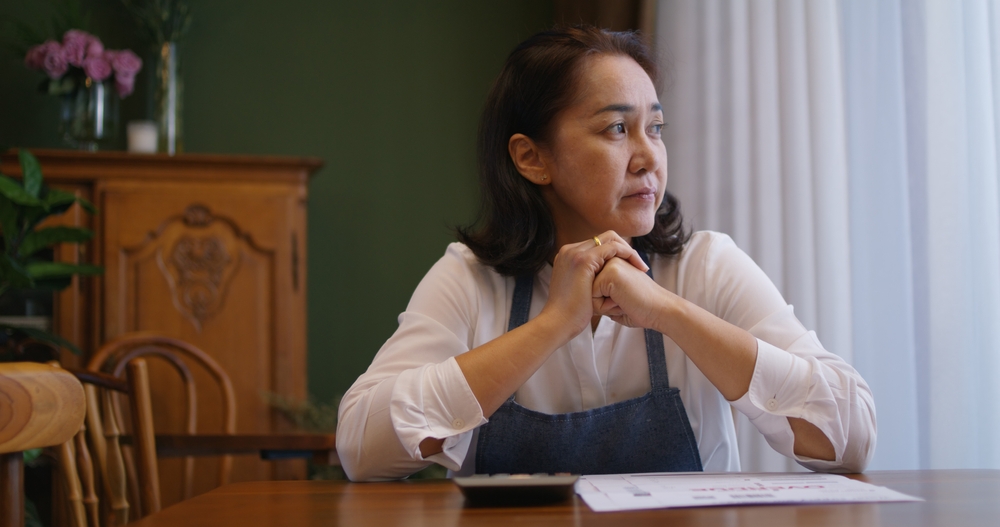
Inflation has been relentless in recent years, driving up the cost of everything from groceries to gas. While all retirees are feeling the pressure, single seniors are being hit especially hard. Without a partner to share expenses or provide financial backup, solo retirees face a steeper climb to maintain their standard of living. From housing to healthcare, the cost of aging alone is rising faster than many expected. And for millions of older Americans, it’s becoming a quiet crisis.
One Income, All the Expenses
The most obvious challenge for single retirees is the lack of a second income. Married couples often benefit from dual Social Security checks, shared pensions, or investment income. Singles, on the other hand, must stretch one income to cover the same fixed costs—rent, utilities, insurance, and food. There’s no one to split the grocery bill or help with unexpected expenses. That means inflation eats away at their budget faster, leaving less room for savings or discretionary spending.
Housing Costs Are a Major Burden
Housing is typically the largest expense in retirement—and it’s especially burdensome for single seniors. Whether renting or owning, solo retirees must shoulder the full cost of housing without help. Property taxes, maintenance, and utilities don’t shrink just because one person lives there. Downsizing can help, but even smaller homes come with rising costs. In high-cost areas, many single retirees are forced to choose between affordability and proximity to family or healthcare.
Healthcare Is More Expensive Alone
Healthcare costs are another area where single retirees face disadvantages. Without a spouse to help with caregiving, transportation, or decision-making, solo seniors often rely more heavily on paid services. That includes home health aides, transportation to appointments, and even assisted living. Additionally, navigating Medicare plans and medical bills alone can lead to costly mistakes. Married couples often share the burden of managing care, while singles must do it all themselves.
Social Security Doesn’t Go as Far
While Social Security is a lifeline for many retirees, it’s less effective for singles. Married couples can optimize their benefits through spousal strategies, such as claiming one benefit while delaying the other. Singles don’t have that option. They also miss out on survivor benefits, which can provide a financial cushion after a spouse’s death. As a result, single retirees often receive lower monthly payments and have fewer ways to maximize them.
Inflation Magnifies the Gap
When prices rise, the financial gap between single and married retirees widens. Couples can absorb inflation more easily by adjusting spending together or leaning on each other for support. Singles, however, have fewer options. They may cut back on essentials, delay medical care, or dip into savings at a faster rate. Over time, this can lead to greater financial insecurity and a higher risk of poverty in old age.
Emotional and Social Costs Add Up
Beyond the financial strain, single retirees often face emotional and social challenges that can indirectly affect their finances. Loneliness and isolation can lead to depression, which may increase healthcare costs or reduce motivation to manage money effectively. Without a partner to share decisions or offer encouragement, financial planning can feel overwhelming. These emotional burdens can compound the impact of inflation, making it harder to stay afloat.
Strategies for Single Retirees
Despite the challenges, there are ways for single retirees to protect themselves. Budgeting carefully, maximizing Social Security benefits, and exploring senior discounts can help stretch a limited income. Shared housing or co-living arrangements can reduce housing costs and provide companionship. Community programs, such as senior centers or volunteer networks, can offer support and reduce isolation. And working with a financial advisor—even part-time—can help create a plan tailored to solo living.
Policy Solutions Are Needed
Experts say the retirement system needs to do more to support single seniors. That includes expanding affordable housing options, increasing Social Security benefits for low-income retirees, and improving access to in-home care. Tax credits or subsidies for single-person households could also help level the playing field. As the number of single retirees grows, these changes will become increasingly urgent. Aging alone shouldn’t mean aging in poverty.
The Bottom Line
Inflation is a challenge for all retirees—but it’s especially punishing for those going it alone. With fewer resources, less flexibility, and higher per-person costs, single seniors are at greater risk of financial hardship. Recognizing the unique struggles they face is the first step toward creating a more equitable retirement landscape. Whether through personal planning or public policy, it’s time to ensure that no one is left behind simply because they’re aging solo.
Are you a single retiree navigating inflation? Share your story or tips in the comments—we’d love to hear how you’re managing.
You May Also Like…
- 10 Ways People Are Being Silently Penalized for Being Single
- 8 Recipes That Turn Leftovers Into Gourmet Meals
- Americans Are Dying Younger: Why is the U.S. Falling Behind?
- The Senior Housing Contract Clause That Can Wreck Your Savings
- Senior Living Nonprofits Adding New Units, but Financial Concerns Are Growing

Teri Monroe started her career in communications working for local government and nonprofits. Today, she is a freelance finance and lifestyle writer and small business owner. In her spare time, she loves golfing with her husband, taking her dog Milo on long walks, and playing pickleball with friends.
Comments